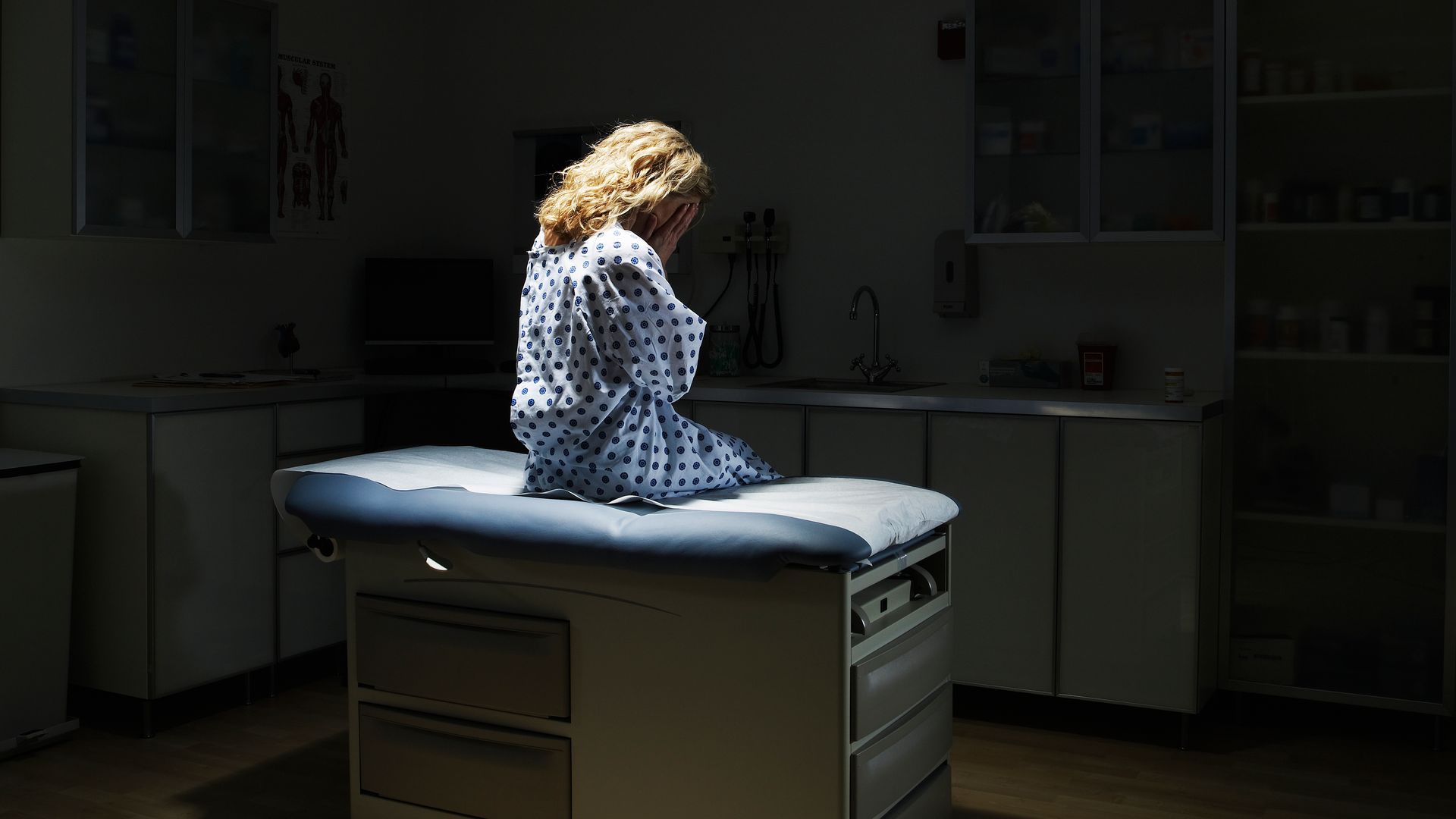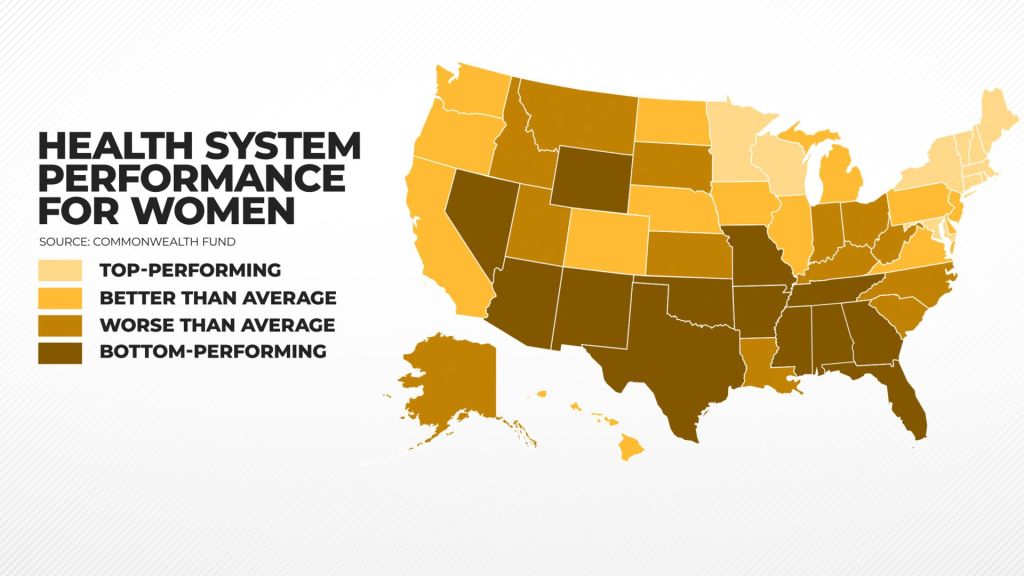
A NEW STUDY SHOWS *WHERE* IN THE U-S WOMEN LIVE – COULD BE A MATTER OF LIFE OR DEATH.
IN ITS FIRST EVER STATE BY STATE ANALYSIS OF WOMEN’S HEALTH – THE COMMONWEALTH FUND FOUND WOMEN ARE FACING A GROWING NUMBER OF THREATS TO THEIR OVERALL HEALTH AND WELLBEING.
THE COMMONWEALTH FUND IS A PRIVATE NON-PROFIT THAT SUPPORTS INDEPENDENT RESEARCH AND GRANTS WITH THE GOAL OF IMPROVING HEALTH CARE.
THEIR RESEARCHERS USED DATA FROM MULTIPLE SOURCES – INCLUDING THE CENTERS FOR DISEASE CONTROL AND PREVENTION…
THEN EVALUATED STATES ON 32 SPECIFIC METRICS ACROSS THREE MAIN AREAS: HEALTH OUTCOMES…
HEALTH CARE QUALITY AND PREVENTION…
AND COVERAGE, ACCESS, AND AFFORDABILITY.
RESEARCHERS FOUND ACROSS THE BOARD – WOMEN ARE MORE LIKELY TO DIE FROM PREVENTABLE CAUSES, SPECIFICALLY THOSE LINKED TO REPRODUCTIVE HEALTH – LIKE PREGNANCY-RELATED ISSUES OR CERTAIN TYPES OF CANCER.
HOWEVER, THEY ALSO LOOKED AT OTHER PREVENTABLE CAUSES – INCLUDING SUBSTANCE USE, COVID-19, AND TREATABLE CHRONIC HEALTH CONDITIONS.
THE STUDY SAYS LIFE EXPECTANCY FOR U-S WOMEN IS THE LOWEST IT’S BEEN SINCE 2006.
RESEARCHERS ALSO SAY THE BIGGEST ISSUES SEEM TO LIE IN STATES WHERE ABORTION AND CONTRACEPTION LAWS ARE MORE STRICT.
STATES IN THE NORTHEAST SCORED THE HIGHEST FOR WOMEN’S HEALTH – WITH MASSACHUSETTS COMING IN ON TOP.
VERMONT, RHODE ISLAND, CONNECTICUT, AND NEW HAMPSHIRE ROUNDED OUT THE TOP FIVE.
THE LOWEST RANKED STATES ARE MISSISSIPPI, TEXAS, NEVADA, OKLAHOMA, AND ARKANSAS.
THE REPORT SHOWS THE LOWEST RANKED STATES TEND MORE TOWARD THE SOUTHERN U-S.
RESEARCHERS WITH THE COMMONWEALTH FUND SAY THEY FOUND A LINK BETWEEN STATES WITH EXPANDED MEDICAID COVERAGE AND LOWER MORTALITY RATES FOR WOMEN.
THEY FOUND THE ROLLING BACK OF OF PANDEMIC-ERA MEDICAID COVERAGE HAS LEFT MILLIONS OF WOMEN EITHER UNINSURED OR FACING SIGNIFICANT GAPS IN THEIR COVERAGE – INTERFERING WITH WOMEN’S ACCESS TO CARE AND LEAVING PROVIDERS THAT SERVE LOW-INCOME WOMEN AT RISK OF CLOSURE.
THEY SAY THE BOTTOM LINE IS WHERE A WOMAN LIVES IS BECOMING A KEY DETERMINANT IN HOW DANGEROUS IT IS TO GIVE BIRTH – OR IF SHE’LL DIE FROM CANCERS THAT CONSIDERED TREATABLE WITH PROPER SCREENING AND ROUTINE CARE.












